Hi E14 Community!  Quick update on the Smart Electronic Load project:
Quick update on the Smart Electronic Load project:
Previous blog posts:
Building a Smart Electronic Load | Introduction (#1)
Building a Smart Electronic Load | Introduction (#1)
I started testing the stages of the load one-by-one, starting with the R-2R DAC.
The DAC is now temporally only 12-bit, as I accidentally used the UART (RX/TX) pins for two of the DAC bits. To avoid glitches those 2 bits are eliminated until the next revision of the board
Other than that, the R-2R DAC is working mostly fine. Based on the rise times the bandwidth is around ~2 MHz:
The DAC is now temporally only 12-bit, as I accidentally used the UART (RX/TX) pins for two of the DAC bits. To avoid glitches those 2 bits are eliminated until the next revision of the board
Other than that, the R-2R DAC is working mostly fine. Based on the rise times the bandwidth is around ~2 MHz:
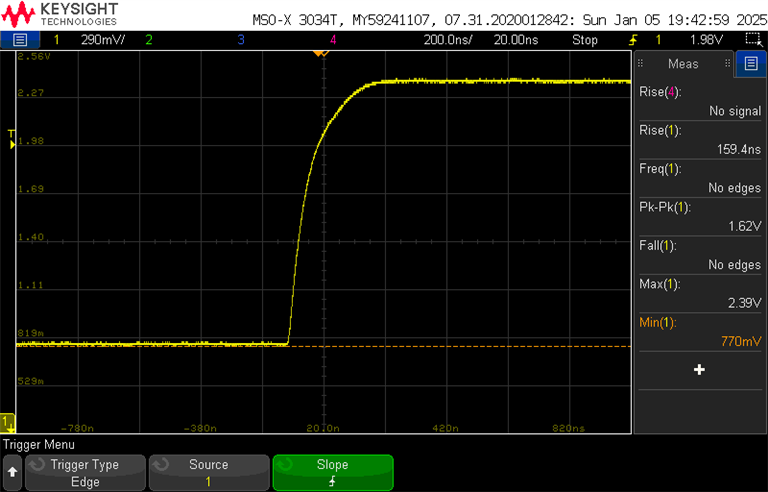
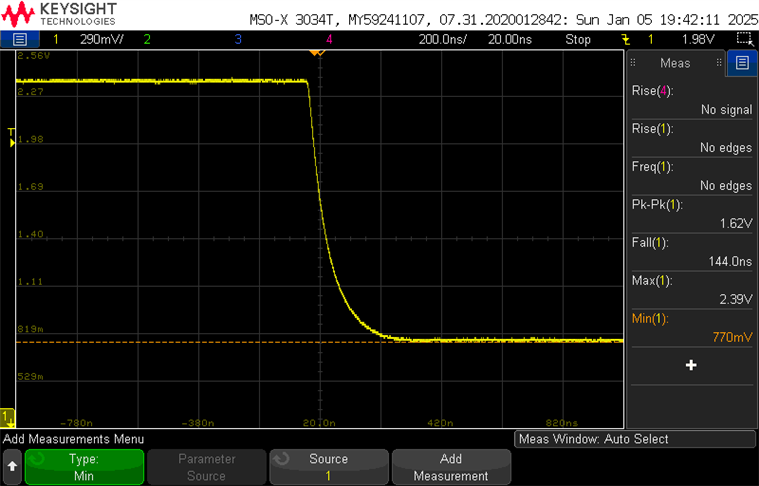
(transition between two voltages op-amp input)
There is some over and undershoot at the op-amps output, so that probably needs a filter capacitor.
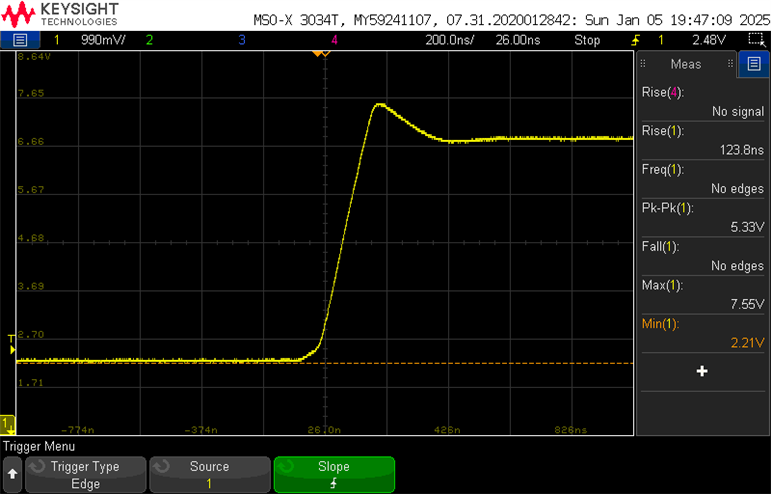
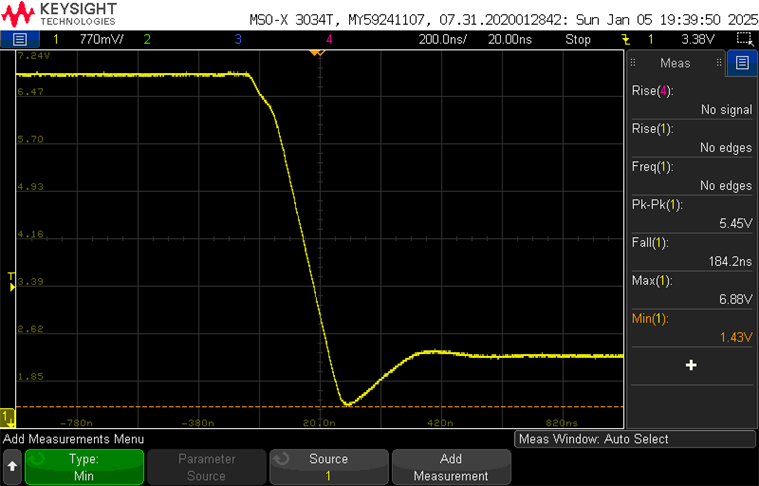
(transition between two voltages op-amp output)
We can also generate pulses / square(-ish  ) waves with up-to around 1MHz duty cycle. Some filtering adjustments needed.
) waves with up-to around 1MHz duty cycle. Some filtering adjustments needed.
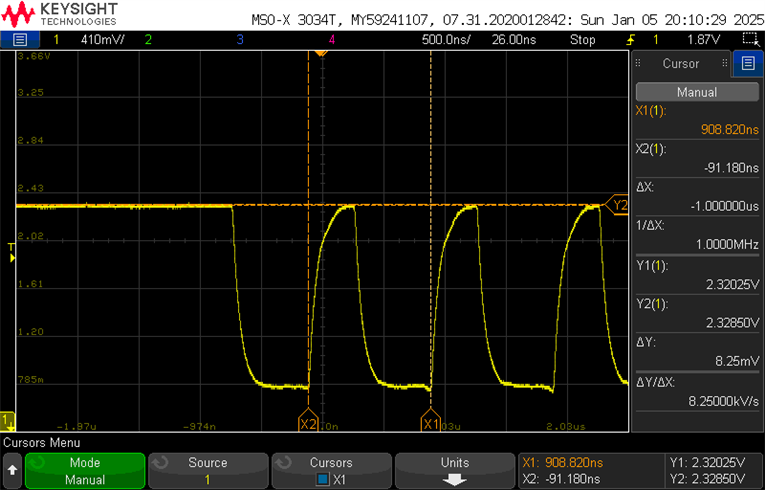
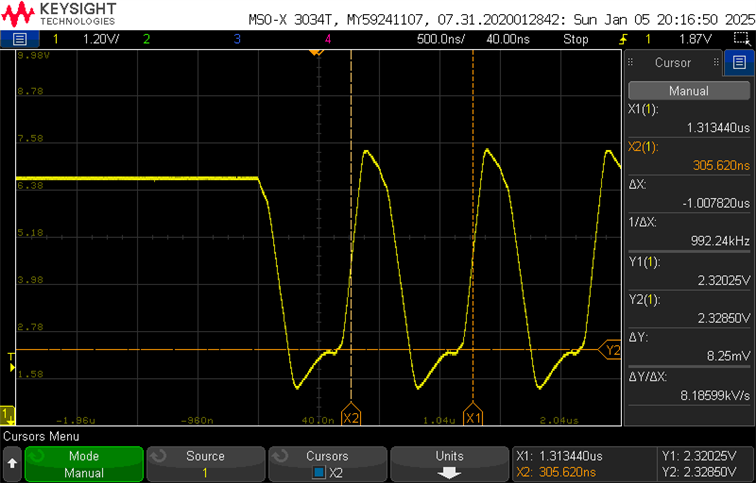
(1 MHz "square" wave with a low and high voltage value, at the op-amp input at output)
Thanks to michaelkellett the load is now stable. The fix was to add a properly sized feedback capacitor to the load control op-amp. This reduces the bandwidth to a reasonable level (currently ~0.4 MHz), and resolved both the high freq oscillation at MOSFET gates and the glitches on one of the channels.
A first (very basic) version of the firmware is also starts getting shape. The focus is mostly on control over the REST API, and on a basic control loop. Voltage, current and temperature sensing is working, along with OTA updates. Source code on GitHub.
Next, I will probably sketch up some Jupyter notebooks to test the load under various conditions. For example I want to take a look at temperature curves at various power levels.
Bonus question: any ideas on why op-amp pins would be sensitive to digital multi-meter probing, and on how to avoid the problem? I found that some parts of the circuit are sensitive to multi-meter probing (in V/mV mode), and also to finger touches.
The problem is most prominent on the non-inverting pin(s) of the DAC op-amp, but in some degree is also present on the inverting (more) and non-inverting pins (less) of the current sense op-amp.
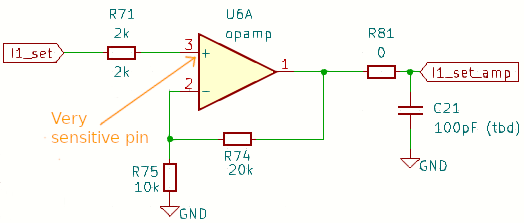
If I probe the above pin (relative to GND) the load current shoots up (triggers the over current protection of the power supply) and there is even some audible noise getting to the PC speakers.
In my mind the multi-meter should act like a ~10 MOhm resistor plus maybe some capacitance, and I cannot image that having such drastic effects on the circuit. Another theory would be that we are picking up some noise with the probe leads.
For the DAC I though to reduce the values of the resistors so that more current will flow, and thus the circuit would be less sensitive to noise.
Hope you enjoyed this post! 

Top Comments